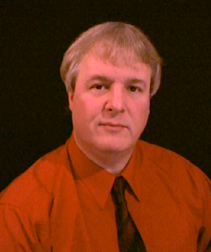Fusion, Fission & Clean Energy
Understanding time & grand unification enabled me to engineer of a new type of fusion energy power plant. The physics explains why previous designs did not work & why these designs will work.
Note: ![]() Expands
Expands ![]() Collapses
Collapses
Fusion, Fission & Clean Energy — Introduction
Astronomers constantly tell us that stars are powered by fusion energy. However, astronomers are constantly running into problems with their theories. Something is obviously wrong with their theories. Energy scientists — both physicists & engineers — are constantly telling us that the “Holy Grail” of clean energy is fusion energy. I whole-heartedly agree. However, they are constantly running into problems with their fusion devices, and have let us down. For over 50 years scientific endevours to duplicate a fusion burn in a power plant have failed. Something is obviously wrong with their theories. Both astronomers and fusion scientists have been led astray by dogmatically sticking to bad theory.
The Ball-of-Light Particle Model — a working grand unification theory — explains the problems scientists are having with their theories. This page will have links that cover this specific area of physics, astronomy, and energy engineering. However, a quick introduction is possible.
First, elementary particles are spheres – or in some cases quasi-spheres — that is, "standing" spherical waves. These standing spherical waves are composed of multiple interacting photons. The photons sweep back and forth over the spherical waves. Instead of calling them "standing spherical waves of photons," I call them "balls-of-light." The name is shorter, and more easily understood and visualized by lay people.
Second, these balls-of-light can have a wide range of stability. Some particles — like neutrinos, electrons, and protons — are very harmonic. They are very stable. Some particles — like the neutron and many other short-lived particles — are somewhat harmonic. They are not stable, and decay with a estimateable half-life. Finally, some "particles" are not harmonic at all. It is a stretch to even call them particles. Particle physicists spot them in their accelerators, and refer to them as, "resonances." In essence, photons merge briefly in a form that is unsustainable. The fields in the quasi-particle immediately repel each other.
Third, when elementary particles decay, the decay process falls into fairly obvious categories. I refer to them as, “decay modes.” For example, the split decay mode — as the name implies — involves the particle pinching, or necking and splitting into smaller particles. This process almost always also releases photons — possibly always. Another obvious decay mode is one I call the fizzle decay mode. The elementary particle simply fizzles out, releasing all of its energy in the form of photons. This is critical in stars. The explosive decay mode my third example. It is critical in supernova.
Obviously, a harmonic particle — such electron, neutrino or proton — does not normally decay. Of course these particles can decay when the are bombarded with other particles or powerful photons. They don't even need to collide. Two or more high speed protons can electromagnetically induce each other to decay — without actually colliding. Obviously, a nonharmonic particle will decay. Let me absolutely clear — a decaying particle is undergoing a form of fission.
Fourth, photons can fuse together — a form of fusion that does not involve elementary particles — yet, in the end, creates elementary particles. Perhaps I should name this subset as, “photon fusion.” The Ball-of-Light Particle explains how can happen. Elementary particles can collide and fuse — but this is a different form of fusion. This is the classic type of fusion described in physics and astronomy textbooks. However, when elementary particles collide, they almost always undergo a far more complex process than simple fusion — one that involves both fusion and fission. First — the particles collide — fusing — briefly creating a larger particle. Then the electric, magnetic and gravitational harmonics take over. If this fused particle is harmonic, it is simply a stable, larger elementary particle. However, this is just about impossible. After two elementary particles collide, the new larger particle is rarely harmonic and almost always immediately decays — again, a form of fission — into smaller, stable, elementary particles & photons. Often, the smaller elementary particles are not harmonic either — quickly decaying into photons & even smaller particles.
Eintein's famous equation — E = mc² — tells us that energy can transform into mass, and mass can transform into energy. However, it does not tell how this happes. The Ball-of-Light Particle Model takes over from here. Pure energy — in the form of photons — can collide, making elementary particles of mass — photon fusion. Then, the particles of mass may decay, releasing some of their photons as pure energy. Obviously — in the energy balance of specific situations — kinetic energy and potential energy also come into play. For example, the velocities of the particles are important from a kinetic energy point-of-view. Within the universe, the position of the photons and particles is important from a potential energy point-of-view.
Fifth, there is something critical about E = mc² — often overlooked. This equation has no limit. There is nothing to limit the size of the interaction. Most scientists believe elementary particles are small. I don't. Most scientists believe atoms are small. I don't. For some reason, my mind was never burdened with these prejudices. There is nothing in physics that limits the size of elementary particles. All of the mass and energy of the universe could be contained in one massive elementary particle — which I believe was the case at the beginning of the Big Bang. There is nothing in physics that limits the size of atoms. An atom could be as big as the sun. Actually, I believe the sun is a giant atom. An atom could be as big as a galaxy. Actually, I believe galaxies are giant atoms.
Again, astronomers tell us that stars get their energy via nuclear fusion. However, the Ball-of-Light Particle Model tells me otherwise. Stars have solid cores — cores that are giant elementary particles. In the majority of stars the cores are decaying — via the fizzle decay mode. As the core of a star decays, it creates a plasma envelope around it. Yes, fusion in taking place in the star — but this fusion is taking place in the plasma envelope. Yes, there is fusion taking place in stars. However, the fusion is not taking place in the core of the star. The core is “solid.” It is one, very large elementary particle. The decay of a star's core is a form of fission — not fusion.
Let point out, when a star experiences a nova event, the outer plasma envelope is ejected, revealing the star's core. So — a white dwarf is a giant elementary particle. After a nova event, as the white dwarf continues to decay, it generates a new plasma envelope. Neutron stars do not exist — astronomical observations of, “neutron stars,” and “magnetars,” are simply observations of larger elementary particles. Pulsars, are not “spinning” stars. They are giant elementary particles undergoing a very obvious decay mode. In a pulsar, there is a powerful electromagnetic wave sweeping back and forth over the particle, ejecting smaller elementary particles & photons — primarily at the poles.
Finally, let me address Black Hole theory. It is completely wrong. The Ball-of-Light Particle is very symmetric. Electric, magnetic, and gravitational fields are unified as one field. In an elementary particle there is a constant, complete symmetry between these fields. In the unified field, the fields of the 3 component fields — electric, magnetic, gravitational — can swing back and forth between each other — an astronomical example is the core of a Cepheid variable — but none of the 3 individual fields can “gang up” on one of the other fields. In other words, gravity can not crush the core of a stary — or any elementary particle — into a Black Hole. Before the particle can be crushed, the electric and magnetic fields resist the gravitational field with perfect symmetry. If the Ball-of-Light Particle Model is correct, Black Hole theory is completely wrong. Yes! There are massive objects at the centers of Galaxies. However, they are not, “Black Holes,” they are simply massive, decaying elementary particles. The new model for galaxies is simple. As the core of a galaxy decays it ejects smaller elementary particles — the cores of stars.
The Ball-of-Light Particle Model is a working grand unification theory. Using it, I have engineered & patented a new type of fusion power plant. This type of powerplant will be the main source of energy for humans from now into the distant future. It will be clean, safe, cheap. Obviously, if my fusion powerplant design works, there will be a number of astronomers with egg on their faces, scratching their heads, wondering, how the bleep does that device work like that!

Hello, my name is John Nordberg. Welcome to my site. It is a very old website going through some growing pains. I hope you enjoy my vision of time, the grand unification of physics, the solution to fusion energy, a new solution for getting fresh water in hot deserts, and a solution to global warming.
Follow @johntnordberg

Please Help Out & Donate
Earthquake Risk
Prediction of current World-Wide Earthquake Risk:
Earthquake Information Other: A, B, C
Keywords
Physics, Time, What is Time?, Grand Unification, GUT, Theory of Everything, TOE, The Speed-of-Light Definition of Time, The Ball-of-Light Particle Model, John Nordberg, Photons, Relativity, Astronomy, Desert Oasification Atmospheric Water Generators, DOAWG, Fusion, Fusion Energy, NFT

This 3-dimensional, geometric equation, is the key to unifying physics. Basically, it states that if you take the “cross product x“ of the electric field vector E and the magnetic field vector B, the result is the gravitational field vector G.Do not confuse the gravitational field “vector G“ (it has a small arrow above it) with the Gravitational constant (which is represented by a big "G" without a vector arrow above it) or with gravitational acceleration (which is represented by just a small "g").
Crowdfunding
- GoFundMe (Donations)
- Kickstarter (Rewards)
- Crowdfunder (Equity)
Blog Entries
- A WordPress Blog is being planned
Videos
Patents
Recent Updates
- Earthquakes
- Under Construction
- Under Construction
External Links
